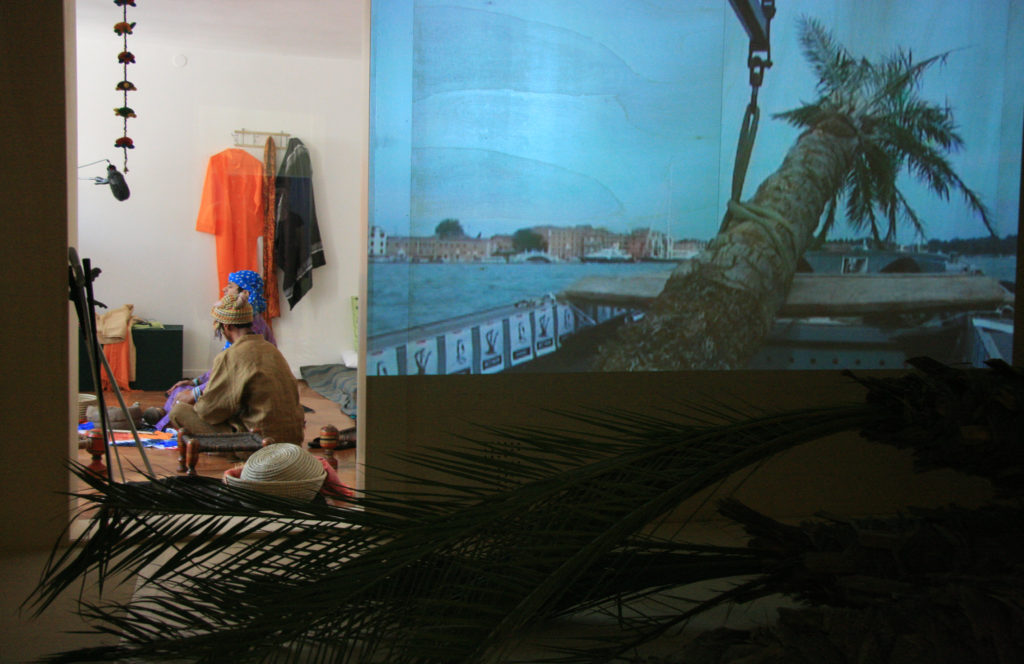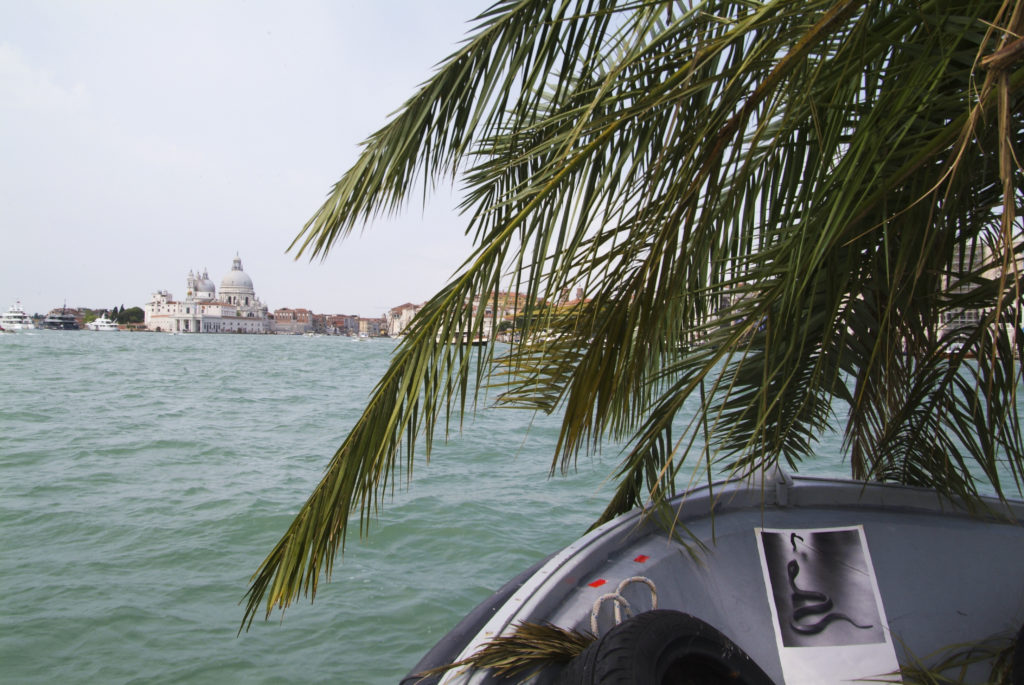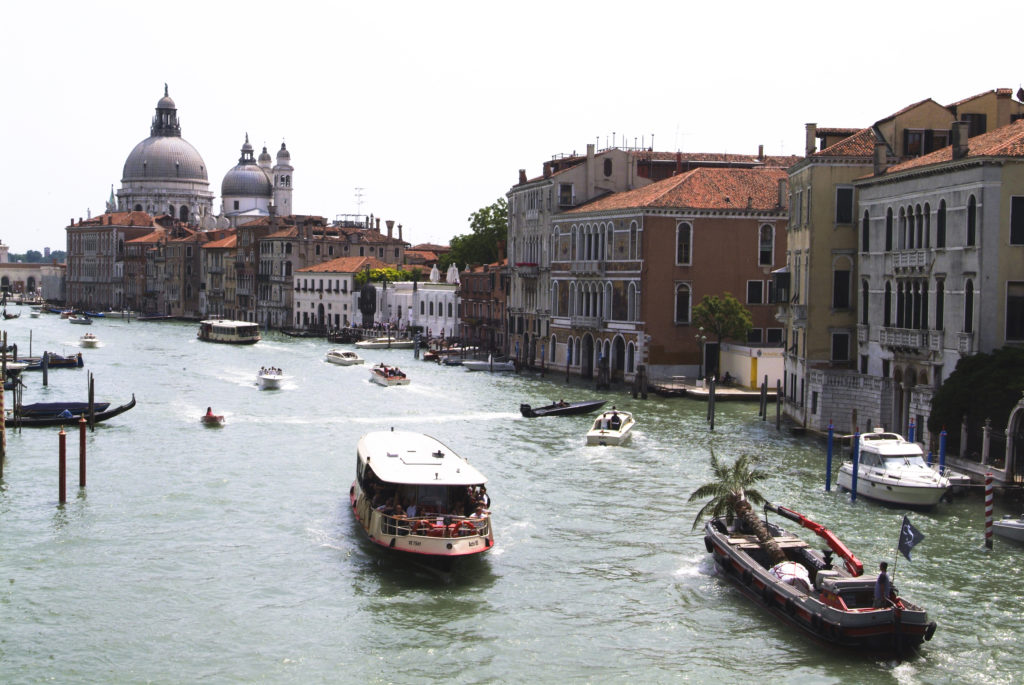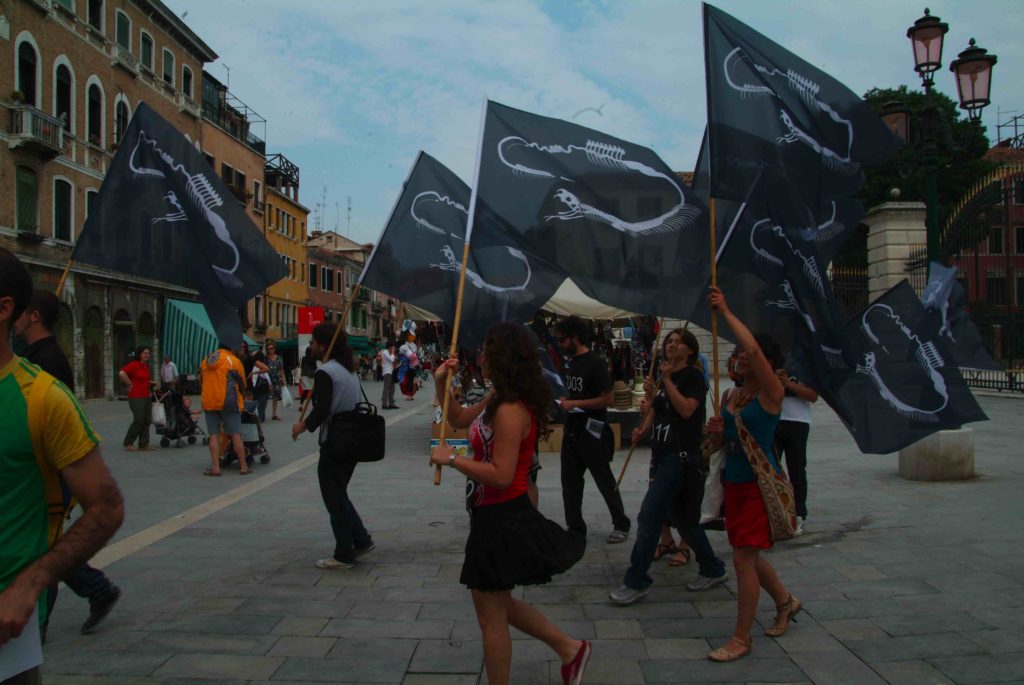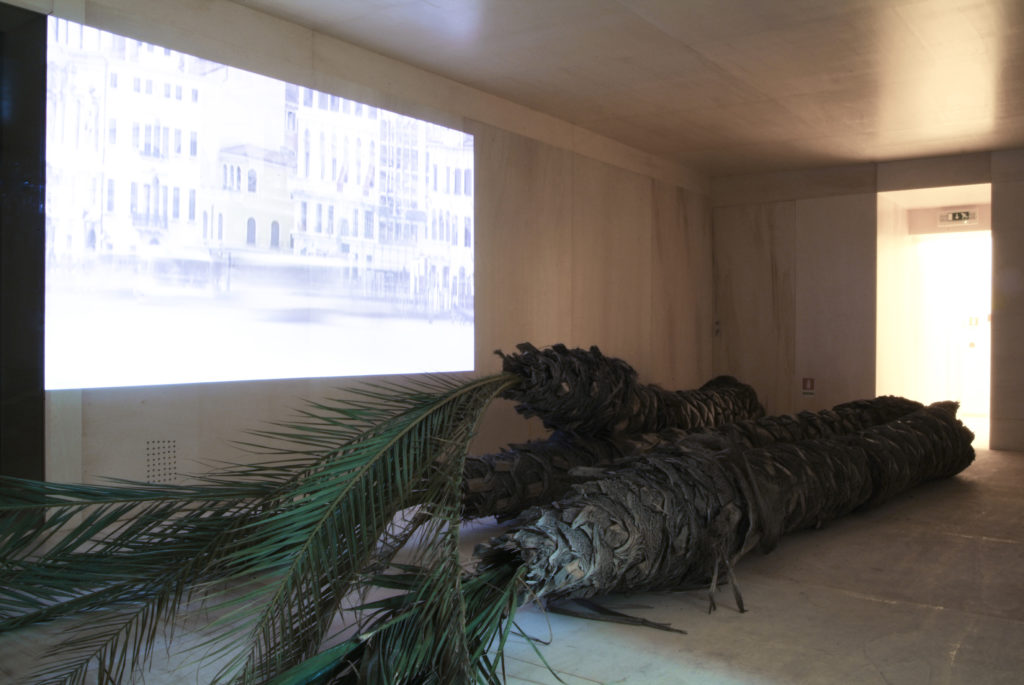Socratis Socratous
Venice Biennale 2009
June 7, 2009–November 22, 2009Palazzo Malipiero, Venice
The Cyprus pavilion for this year’s Venice Biennale, curated by Sophie Duplaix, presents Socratis Socratous. The artist will stage a series of installations, performances and happenings at the Cyprus Pavilion and in other city locations.
The artist writes about his project:
“As is often the case, seemingly trivial incidents lead to an unexpected outcome. Frequently, people are unable to predict their impact as they are caught unprepared. Yet an almost magical, poetic, or even eerie feeling may surround these incidents. This can form the starting point for rumours to erupt.
In the recent past, a large number of palm trees were imported to the north of Cyprus, as part of an attempt to create a more exotic, eastern feeling to the local environment. Almost as soon as planting began along the northern coast, stories started to spread. Rumour had it that, amongst the roots of these trees, hid the eggs of cobras; what’s more, these eggs had started to hatch. As snakes are not bound by political frontiers, the fear grew.
The two ethnic communities of Cyprus, Greek-Cypriot and Turkish-Cypriot, remain to this day separated by outside forces against their will, seemingly unable to find a way to coexist. Their political leaders are caught up in a perpetual cycle of negotiations, with no obvious end in sight.
The enduring separation and dual existence of these communities, paired with a common tendency to highlight and manipulate events occurring on the other side, has systematically resulted, over the years, in an extensive set of stereotypes emerging about one another. A classic example is the characteristic perception of East versus West (the wilder, more exotic “Turkish-Cypriot north” compared with the European “Greek-Cypriot south”), with reference both to lifestyle and the natural landscape.
The palm tree, like the cobra which it is about to bear, carries along with it a number of religious and mythological symbolisms dating far back in the history of civilisation and which continue to penetrate the collective unconscious. Modern literature is not short of examples either; following a trip to Cyprus in 1969, the Greek Nobel-prize winner Georgios Seferis, produced a collection of poems, one of which carries political connotations, using the metaphor of the snake as the evil conqueror.
In this year’s Venice Biennial, a palm tree wanders the city on a boat, protruding menacingly like the barrel of a cannon. The sight of this majestic plant, uprooted and placed awkwardly in an unfamiliar setting, puzzles the onlooker, creating a desire for it to be replanted again, somewhere suitable.
Snake-charmers roam the city, having travelled from India – a country whose colonial history uncannily resembles that of Cyprus. Allegedly, the snake-charmers alone have the power to lure the serpents from their hiding place.
And so the rumours start; there are snakes in the city.”
